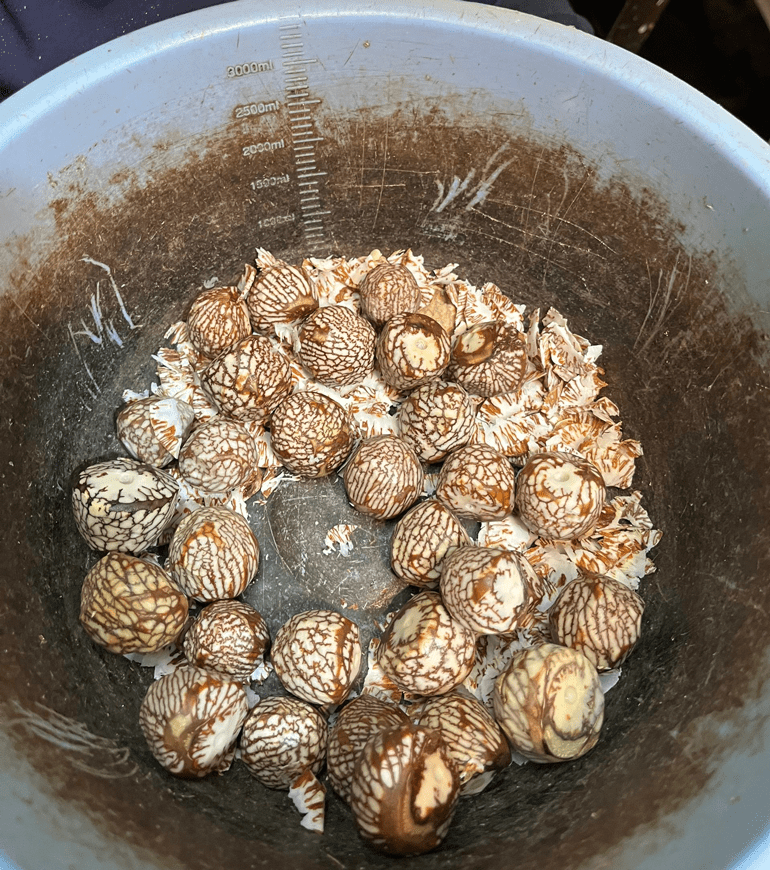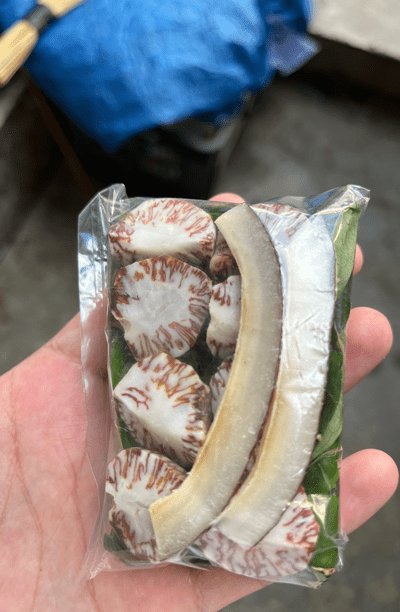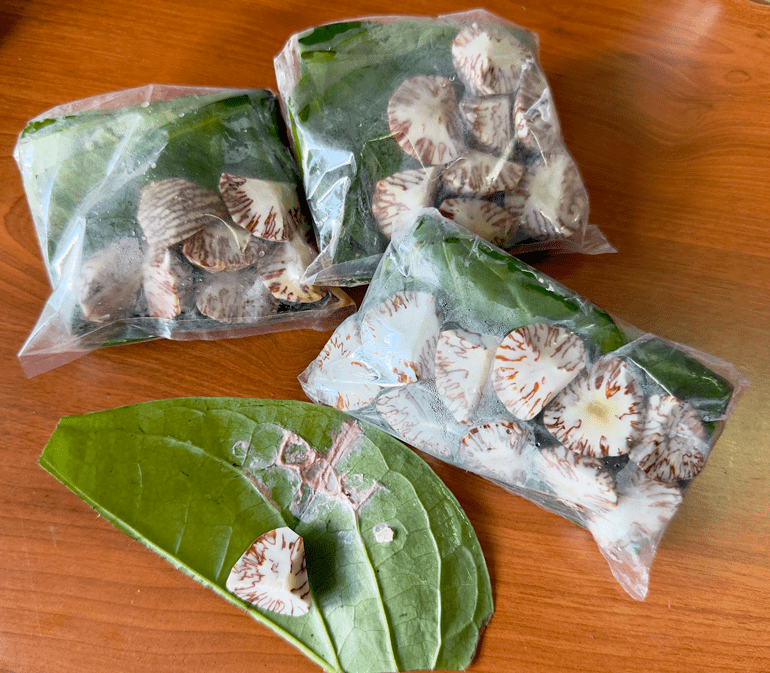Red-stained Teeth
—Sonam Dorji and Richard Kamei
Volume 5 | Issue 3 [July 2025]
There is a saying among the Khasis that the kwai is a force that bridges the divide between the rich and the poor. Betel quid consumption is very common in the northeast region of India, where people use them by combining betel nut (Areca catechu) with a betel leaf (Piper betel). The popularity of betel quid is present in every state of the northeast region of India. In Meghalaya, kwai is consumed where areca nut is taken with betel leaf and lime. When consumed, in addition to the reddish form it gives, it has a distinct taste, giving an exhilarating feel. Kwai consumption expresses one’s belongingness to a community and how one secures socialising with fellow beings. Sharing of kwai is one way to sustain social bonding and extend friendship. They are considered a bridging factor in social interaction, and their significance is found in rituals. Regarding kwai consumption, people believe that it makes the body warmer during winter. The kwai eaters generally carry the red stains on their teeth and tongue with a sense of pride.

The practice of consuming kwai in Meghalaya treads on the concerns surrounding ill effects on health and its cultural aspects for social bonding. The health risks kwai consumption poses are significant. Many recent studies in 2024 point out that the high prevalence of cancer in Meghalaya is attributed to betel nut consumption, among others (WHO 2024). In neighbouring Manipur, the popularity of betel nuts goes beyond consumption. It is used in the marriage ceremony of the Meitei community where the exchange of betel nuts is considered an important custom. Betel nut is also used as an offering during rituals in the Meitei society. The consumption of betel nuts is common among different communities living in Manipur.

The popularity of tamul seeps into the everyday life of the different tribes of Nagas in Nagaland. One instance is of the Konyak Naga, where red-stained teeth among the men is treated as tradition. When it comes to Assam, betel nut is also known as tamul. It takes on an important role during weddings, and the lack of it during a wedding has social meaning where a tamul is a must to complete the message of the invitation to guests. In the biggest festival of Assam, Bihu also has an important place for tamul. Betel nut consumption is common in Arunachal Pradesh, Sikkim, and Tripura; however, they are not widely consumed like the rest of the northeast region of India. The popularity of betel nut in Mizoram is reflected in how every local shop sells betel, known locally as kuhva hring. Like other societies in the region, betel nut is also used in the Mizo society to offer to visitors and guests.

There’s a similar culture of consumption of doma, as the betel nut is called in Bhutan.
As a Bhutanese where doma consumption is ingrained in their culture and identity, one of the authors does consume doma but in a moderate manner. Yet, health concerns surrounding doma are alarming, and various research and findings attribute doma consumption leading to cancer. Sharing of doma is seen as contributing to social interaction; offering and sharing doma is counted to be about bonding and extending friendship. Consumption of doma therefore is intrinsic to being Bhutanese.

It’s the fermented betel nut that is commonly known as doma. Folklore is attached to the origin story of doma in Bhutan which tells us that in the olden days the inhabitants known as Monyul used to consume raw meat and bones. This custom was said to have been replaced by betel leaf, lime, and areca nut from the eighth century when Guru Rinpoche offered this substitute. For instance, the Zhugdrel Phuensum Tshogpa ceremony treats doma offerings as important because of the belief that they bring prosperity. All these indicate that areca nut consumption is not indigenous to Bhutan, that doma became a part of Bhutanese custom and found its presence in ceremonies, rituals, and socialisation.


![Red-stained Teeth <br>Volume 5 | Issue 3 [July 2025]](https://www.oneating.in/wp-content/uploads/2025/09/thumbnail-2.png)
